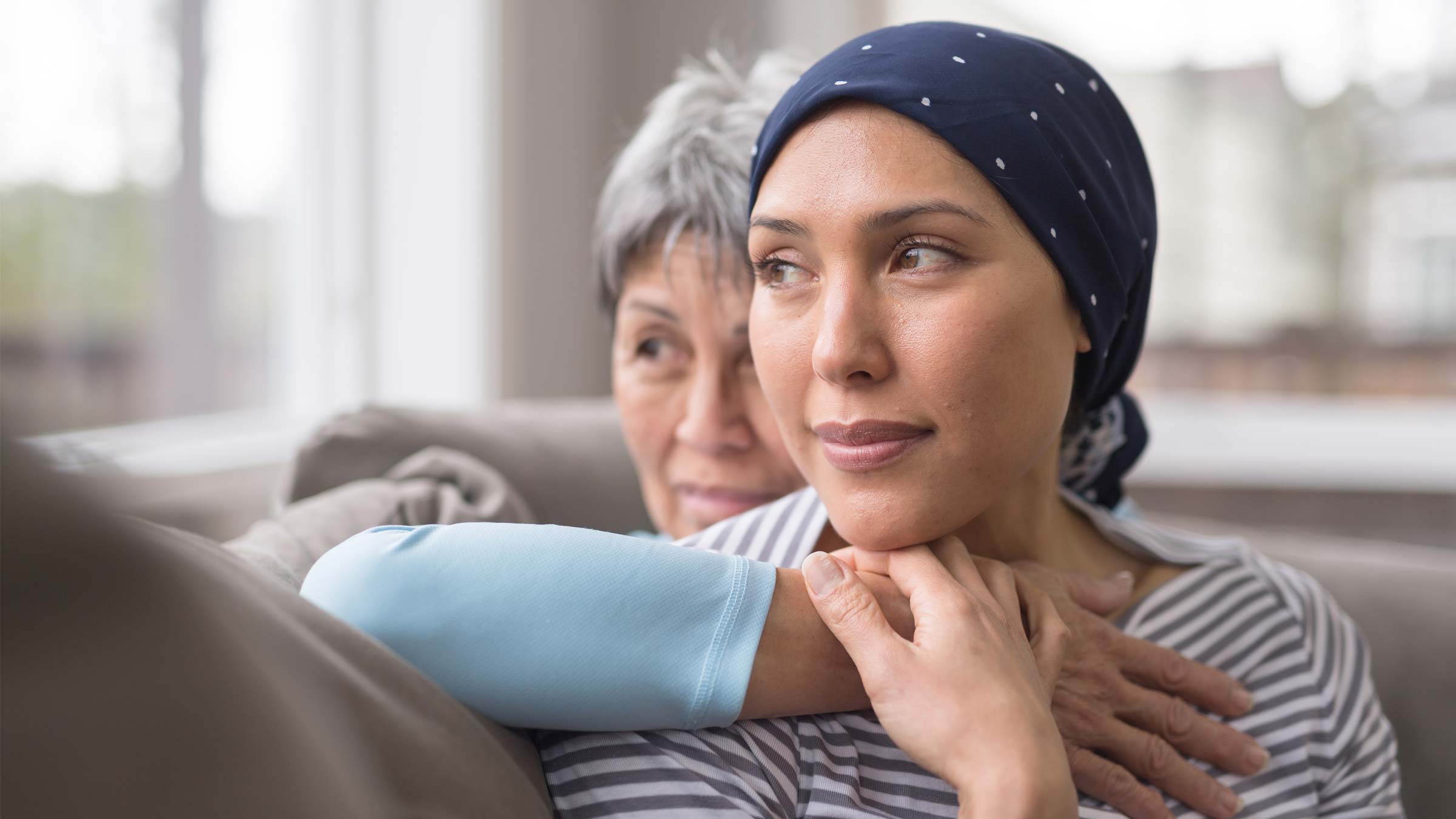
Many women worry: Will I develop breast cancer? Knowing your risk factors for breast cancer — and which of these factors you have the ability to influence — can play a key role in your long-term health. One in 8 women will develop breast cancer in the course of her lifetime. However, this risk can increase based on personal or family history.
Early detection through screening remains the most effective way to successfully combat breast cancer. Completing a comprehensive risk assessment along with a personalized approach to cancer screening can detect breast cancer in the early stages, when the odds of long-term survival are 95% or higher. There are also effective ways by which you can reduce breast cancer risk factors.
Understanding breast cancer risk factors
There are several risk factors known to affect breast cancer risk. We can categorize them as non-modifiable (risk factors for breast cancer that aren’t within your control) and modifiable (risk factors within your control).
Non-modifiable breast cancer risk factors
Family history: If you have a first-degree relative (parent, sibling, child) who has been diagnosed with breast cancer, your lifetime breast cancer risk could be twice the average; having multiple family members with breast cancer can further increase this risk. This could indicate the need to start breast cancer screening before turning 40, with supplemental imaging such as breast MRI or ultrasound in addition to the annual screening mammogram. It may also be appropriate to consider risk-reducing drugs that can lower your chances of developing breast cancer.
Genetic mutations: The three most common inherited genetic mutations associated with high risk for breast cancer are BRCA1, BRCA2 and PALB2. Together, they account for about 70% of all known mutations that cause hereditary breast cancer. They can increase the risk of developing breast cancer by four to six times. In addition to breast cancer, these mutations can increase the risk of other types of cancers. Knowledge of these mutations can help family members who are carriers of the gene be more proactive with cancer screening and risk reduction, whereas those who do NOT inherit the mutation might not be at an increased risk despite a known family history of breast cancer.
It’s important to discuss your family’s cancer history and other risk factors with your primary care physician to determine if genetic testing at a National Cancer Institute-designated comprehensive cancer center, like the OSUCCC – James, is warranted. While there are consumer-based genetic tests that can identify some genetic mutations, they’re not considered clinical grade and are often less reliable than provider-based testing. They’re also not as comprehensive as we’d like them to be to accurately identify genetic susceptibility to hereditary cancers.
Estrogen exposure over your lifetime: Having your first period at or before the age of 11 increases the risk of breast cancer, as does entering menopause after the age of 55. While the increased risk is minimal, we encourage women to consider a comprehensive risk assessment that will aid in developing a personalized screening and risk reduction care plan.
Modifiable breast cancer risk factors
Birth control or hormone replacement therapy: Observational evidence suggests that post-menopausal hormone replacement or prolonged use of birth control as potential risk factors for breast cancer. The relative increase in cancer risk is small, though, and varies with the type and duration of hormone use. In most cases, we do NOT suggest that a woman stop using birth control to reduce breast cancer risk.
Later-in-life babies: Having your first baby over the age of 30 can increase your risk. But again, the increased risk is minimal.
Breastfeeding: Breastfeeding has several benefits. One of them includes a lower risk of breast cancer compared to women who don’t breastfeed. We encourage women to breastfeed for at least six months if you’re able.
Body weight and physical activity: Obesity increases the risk of breast cancer in post-menopausal women. We recommend exercise (at least 150 minutes a week of aerobic exercise) and a healthy diet to help maintain an appropriate weight. A predominantly plant-based diet can help maintain an appropriate body weight and has several other health benefits, including lowering the risk of other types of cancer, such as colorectal cancer.
Alcohol: Any alcohol consumption increases breast cancer risk. It’s best to avoid alcohol. For those who consume alcohol, keeping your intake to less than three drinks per week is encouraged.
Breast cancer screening
Screening and early detection saves lives by catching breast cancers in the early stages. When we diagnose breast cancer at Stage 0, the cure rate is 99% or higher; in Stages 1 and 2 it’s over 95%. The chance of recurrence rises significantly for those with Stage 3 when cancer has spread to multiple lymph nodes. We’d much rather diagnose a patient’s breast cancer at an earlier stage with favorable outcomes.
Mammograms: The national guideline for women with average risk recommends yearly mammograms starting at age 40. Women with higher risk or dense breast tissue might need to begin at an earlier age or consider supplemental breast imaging.
Self-breast awareness: Nobody knows your body better than you, so be aware of any obvious changes to the breast tissue, armpit, nipple or skin. A change doesn’t necessarily mean breast cancer, but you should follow up with a visit to your doctor.
What to do if you’re at high risk for breast cancer
If you’re at a higher risk for breast cancer, early intervention and monitoring is critical. Specialized comprehensive assessments like those offered through our High-Risk Breast Cancer Program should be considered. At this clinic, we provide a comprehensive assessment that includes genetic counseling, and a team of breast cancer specialists helps develop a personalized care plan.
Knowledge is power when it comes to breast cancer
It may be uncomfortable to face your risk factors head-on, but understanding your risks and talking about them with your doctor is the first step to developing a shared personalized care plan that makes you feel comfortable and confident about your health choices.

Learn more about breast cancer treatment at the OSUCCC – James
or call 800-293-5066 to schedule an appointment.
Learn more
At high-risk for breast cancer?
The High-Risk Breast Cancer Program provides genetic counseling, risk assessment and personalized plans.
Learn more




